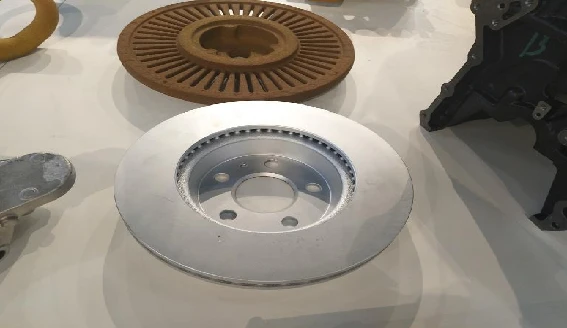Understanding the Process of Sand Casting
Sand casting is one of the most widely used metal casting processes, primarily due to its versatility and cost-effectiveness. This method involves creating a mold from sand to form metal shapes, making it ideal for both small production runs and large-scale industrial applications. In this article, we will explore how sand casting works, its components, benefits, and applications.
The Basics of Sand Casting
At its core, sand casting relies on the use of sand as the primary mold material. The process begins with the creation of a pattern, which is a replica of the final product. This pattern is typically made from metal, plastic, or wood and is designed to withstand the stresses of the sand packing and the molten metal pouring processes.
Once the pattern is ready, a mold is created by packing sand around it. The sand used in this process is mixed with a binding agent, often clay, which helps hold the grains together. The mixture can also include water to enhance the bonding properties. The sand is packed tightly around the pattern, creating a mold cavity that will shape the final product once the molten metal is poured in.
Mold Creation Process
The mold creation involves several steps
1. Pattern Placement The pattern is placed in a flask, which is a container that holds the sand. Flasks can be in two halves (top and bottom) or can be a single unit depending on the complexity of the mold.
2. Sand Packing The sand mixture is packed around the pattern. This may involve ramming the sand with tools to ensure it is compacted effectively.
4. Core Creation (if needed) For complex parts with internal features, cores made of sand may be created and positioned in the mold.
5. Mold Assembly The two halves of the mold (if applicable) are assembled together, ensuring that the mold cavity aligns perfectly.
how does sand casting work

Pouring the Metal
With the mold prepared, the next step is to melt the metal that will be poured into the mold. Common metals used in sand casting include aluminum, iron, and bronze, due to their melting points and casting characteristics. The molten metal is then poured through a gating system that directs it into the mold cavity, filling it completely.
The cooling process is critical, as the metal must solidify within the mold to take on the desired shape. Depending on the metal used, cooling times can vary. Manufacturers carefully control the cooling process to minimize defects such as warping or shrinkage.
Finishing the Product
Once the metal has fully cooled and solidified, the mold is broken apart to retrieve the cast part. This is usually done by hand, or with the help of mechanical equipment. The cast part often has a rough exterior that requires finishing processes, such as grinding, machining, sandblasting, or polishing, to achieve the desired surface quality and dimensions.
Benefits of Sand Casting
Sand casting offers several advantages
- Cost-Effectiveness The materials used are relatively inexpensive, and the process can be scaled for both small and large production runs. - Versatility It can be used to cast a wide variety of metals, including ferrous and non-ferrous alloys. - Complex Shapes The process allows for great flexibility and precision in creating complex shapes and designs.
Applications of Sand Casting
Sand casting is employed across various industries, including automotive, aerospace, and art. It is used to produce engine blocks, machine bases, artistic sculptures, and many other components that require high durability and precision.
In conclusion, sand casting is a fundamental manufacturing process that combines art and science to produce metal parts with remarkable efficiency and adaptability. Understanding how this method works not only highlights its importance in modern manufacturing but also showcases its enduring relevance in various applications. Whether for functional components or artistic endeavors, sand casting remains a vital technique in the realm of metalworking.
Post time:ធ្នូ . 18, 2024 04:06
Next:sand castings
